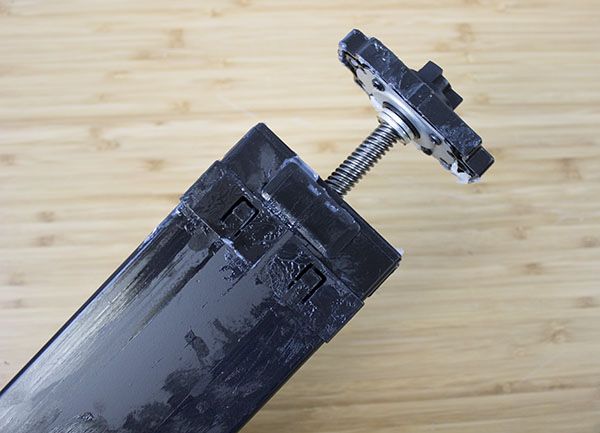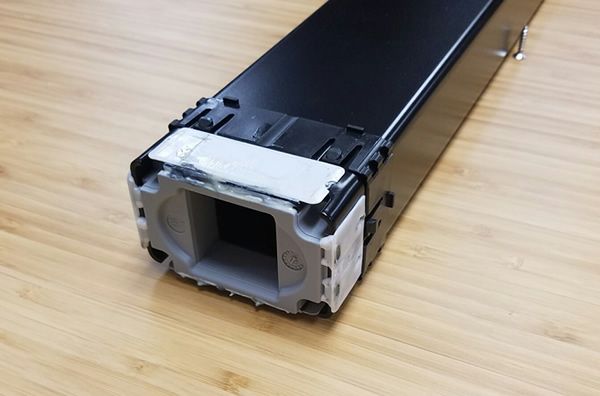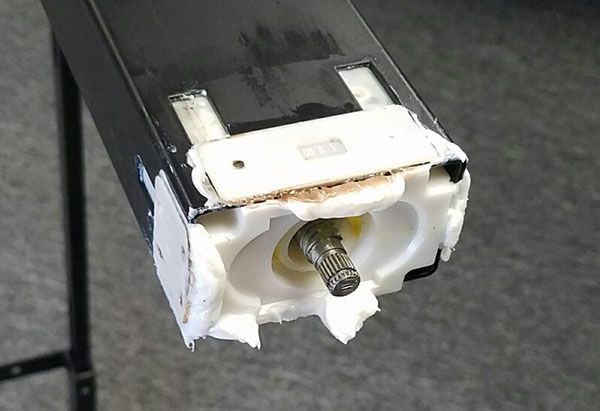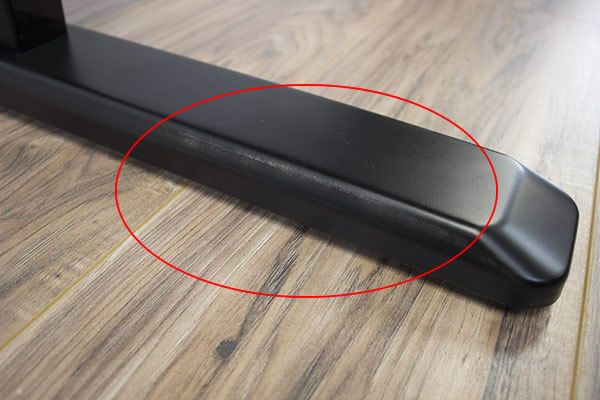I get it: everyone is always looking for that next great deal. I am even guilty of it myself and find that I do it for my own personal purchases. No one wants to feel like they are getting a bad deal. Electric standing desks aren’t immune to this problem either. As the market has continued to mature, so have the amount of options. Naturally, you’ll find products entering the category with their sole purpose to offer the lowest price. The problem is at a certain point this cost cutting impacts how reliable and efficient the product can be. No matter how hard you look, products under $400 will share a good majority of the 12 problems mentioned in this post.
Full Disclaimer: We are an office furniture dealer and sell some of the products we review. To learn more about the products we sell, our review process and why you can trust us, please visit: Why we’re different. Who is BTOD.com and The Breakroom Blog?
12 Reasons To Avoid Cheap Electric Standing Desks
- Unstable at Standing Height
- Low Quality Electronics
- Cheap Glide Systems
- Poorly Married Columns
- Excessive Lubrication
- Bad Internal Gear System/Components
- Inconsistent Motors
- Short Warranty Periods
- Inconsistent Paint Finish and Welds
- Small Lifting Capacity
- Slow Adjustment Speed
- Lack of Quality Control
Why Was $400 The Breaking Point?
Over the course of the last year I have had the opportunity to review more than 40 electric standing desks. These desks ranged anywhere from $300 all the way up to $1700. The review process was always the same, assembling each desk and testing how they function. In the end I would tear each desk apart to learn the inner workings that made them tick. What I started to realize: the closer I got to $400 the more these problems became the norm versus the exception. Sure, some desks were better than others, but they had enough issues to raise a red flag.
Should You Really Care?
This depends on how you view your next standing desk purchase. Are you looking for a long term investment that will be with you for more than five years? Or are you looking for a quick fix to get you standing? The truth is that some of the desks that are around $400 could certainly make it to five years and a few are even warranted to that point. If I were going to be rolling the dice I would stick with the brands, that at a minimum, provide a warranty of three to five years. Products that have warranties that are one or two years are the products that should be avoided at all costs. While you could find yourself saving 20 to 50 percent off better quality desks, there is a high likelihood you’ll be looking to purchase the better product within the next year. What happens when the only desk you own is stuck at awkward height that makes it impossible to work? Will that low cost provider send out replacements right away? Will it still be covered under warranty? Are they still going to be in business? These are real concerns with some of the lowest priced products available today. They are going away just as quick as they pop up.
1. Unstable at Standing Height
Stability for a standing desk is a real issue that you must consider. I have yet to find a single desk under $400 that is stable at standing height. There are a multitude of components to a standing desk that can make or break its stability. After testing as many desks as I have, small issues with a loose foot or upper support bracket can change the stability of your desk. Bigger problems with poorly fit glides, lack of a traditional cross support or cheap metal components have also played a big part in stability. Low cost providers have one objective; keep the price down at all cost. Making a standing desk stable isn’t a cheap endeavor, so it should come as no surprise that these low cost options are all unstable.
2. Low Quality Electronics
I think that most would assume that low cost standing desks have to include low quality electronics. When we look at a lot of the cheap products coming from China, this is one of the first areas those providers look to cut costs. When comparing a desk under $400 to a more expensive alternative, the first place we look is inside the control box. The problem is, when you look at the plastic box that houses the control box, they all look fairly similar. The only noticeable difference is the size of the control box between products. Opening the control box is where you will find these low cost providers skeletons.
Cheap standing desks have all shared these common characteristics. They offer two board systems; which include one for the power supply and the other for the functionality of the desk. These boards are mass produced in China and are being used for many different products outside the standing desk category. They also incorporate large components that require excessive amounts of caulk to hold them in place. There is no real consistency to how much is used though and some of them have been worse than others. The second problem with the two board system is how they link the board’s together; using cheap plastic connectors that don’t provide a solid connection. Instead, these connections tend to be loose and would likely be the first thing to fail. Lastly, when you look at their toroid cores used, they are almost always poorly wrapped. These should be evenly spaced and consistent throughout to provide the real benefit they are intended to.


3. Cheap Glide Systems
Inside all columns of standing desks you will find glide systems. These small pieces of plastic are used for two major reasons. The first is to create a snug fit between the two or three stage columns that standing desks use. The second is to create a natural lubricant between the columns as that adjust up and down. As you can imagine, this component of a standing desk will see a fair amount of abuse over its lifetime. It’s important that the glide systems used in your standing desk are good quality and can withstand the high cycle counts the desk will experience for a lifetime of use.


The problem with low quality glides is really two fold. The first issue that people will likely notice is that their desk stability will worse over their ownership of the desk. As the glide pads wear down, the play between the columns will increase. It doesn’t take much play in the column to create a big problem at standing height. The second issue is the binding that starts to occur in the column as the glides wear down. Many times these low quality desks will show uneven wearing with their glides. As this occurs, natural binding will start inside the columns. Since most desks have an anti-collision function, this binding sets off a false positive. As the desk is raised it will think the binding is a collision and reverse course to prevent damage.
4. Poorly Married Columns
In a continuation of the last problem with cheap glide systems, the fit of the columns is a major component for the desks stability. If the columns are not properly married together, you will notice the play in the columns right away. While this might not create a stability problem at the sitting height, by the time you are to a standing position it will be an issue. We have found that poorly married columns tend to be a problem for the absolute cheapest products we’ve tested. This includes companies like Sinolinear that manufacturers the 103E desk for VIVO. They recently started to produce electric standing desk frames and their inexperience showed. When we tested the 103E desk you could feel the columns moving when the desk was rocking and wobbled. This created major stability problems for the VIVO brand.
5. Excessive Lubrication
As we go through the list you will start to see the pattern. All of the problems that we mention seem to be interconnected to another in some way. That is definitely the case with the excessive lubrication problem we have found amongst all of the desks under $400. After we assemble a new desk, we make sure to do a few cycles up and down. This is to ensure that everything is working properly out of the box. Depending on the brand, some of the frames we tested had shown lubricants on the columns before we even cycled it once. Others only required a few cycles to start to show signs of clear or white grease throughout the column.

During the review process, we always open a column to see what is hidden inside. Similar to the control box, a lot of these manufacturers will hide issues where customers cannot see them. It’s safe to assume that your average consumer has no intention to open the leg of their desk. It’s a good thing too, because inside the frame you will a boat load of grease. This problem is so bad that there isn’t a way for you to wipe down the frame and keep it clean. The amount of lubricant inside the frame is so bad that it will be an ongoing issue for most of these desks under $400.
6. Bad Internal Gear Systems and Components
The internal gear system of the electric standing desk is an important component to a standing desk. Combined with its motor(s), this is what moves the desk up and down efficiently. One of the things to consider with a gear system is that it is a major load bearing component to your standing desk. If a desk is able to lift the load, it is because the gear system is strong enough. How quickly and smoothly it lifts that capacity is also dependent on the gear system. Poorly manufactured gear systems will tend to vibrate and not function as efficiently.

One of my biggest concerns after opening all of these low cost standing desks was the amount of plastics used within the gear system. Not only the fact that it was plastic, but the quality of the plastic and how much was used for load bearing components of the gears. We’ve found that the lifting capacities advertised for products can vary significantly. Some brands that use the same OEM even have widely varying weight capacities for the same frame. With weak internal components this could pose a major concern. If these plastic parts were to break, the function of the desk would be severely impacted.
7. Inconsistent Motors
The consistency of your desks motor is important for a couple reasons. The first is that it’s annoying to hear your desk working at various levels of power as it transitions through different heights. The desks that have consistency issues will tend to have odd whining sounds as they move through their transitions. The second is if you plan to load the desk up with a significant amount of weight. We have seen desks that have consistent lifting problems that slow down significantly when loaded beyond 150 to 200 lbs. It’s a fair consideration to wonder if the motor is being overworked and whether it could potentially shorten its life expectancy.
8. Short Warranty Periods
If a manufacturer doesn’t have faith in their product, how can you? There are brands that we have tested with warranties as short as one year. In my opinion, even products that have a warranty period that is only two years long are suspect. If the brand can only show enough confidence in their product to offer a one or two year warranty, it should be enough for you to realize it’s not a quality product. What happens after the warranty period is up? Will you be able to purchase replacement parts? If you can, how much will they cost and will this be an ongoing issue? By the time you’re done replacing broken components, you could end up spending more than if you paid the extra money for a quality standing desk. I suggest at a minimum you consider an electric standing desk with a three to five year warranty.
9. Inconsistent Paint Finish and Welds
Some of the brands that we have tested under the $400 mark have shown serious issues with paint consistency and welds. This is definitely linked to quality control, which will be talked about in our last problem. Depending how much you care about the aesthetics of your standing desk, this could definitely be a deal breaker. Overall, I feel like the paint issue isn’t as big of a deal as the welds were.

10. Small Lifting Capacity
Desks with small lifting capacity ratings have been a common theme for desks under the $400 mark. This can be linked to the motors and/or the amount of power coming from the control box. Any time we see a desk that has a capacity that is at or below the 200 lbs. Mark is almost always underpowered. While some of these desks are able to lift more than the advertised capacity, you will likely have a big drop off in performance. If you plan to use a heavy solid wood desk surface or use heavy components, this should be a concern. Any time you exceed a manufacturers weight capacity you run the risk of breaking the desk. Manufacturers are good at recognizing when customers have abused their desk and this would fall under the abuse section in most warranties.
11. Slow Adjustment Speed
Three of the last electric standing desks that I have tested under the $400 mark have shown some of the worst adjustment speed performances. Each averaged close to .8” per second, which is amongst the slowest speeds I’ve tested. While some may have the patience to wait for their desk to switch from sitting to standing, others will likely not. When desks have a slow adjustment speed, paired with a small lifting capacity, it is a major concern for quality. The desks that have this combination have been amongst the worst that I have personally tested.
12. Lack of Quality Control
The last problem in the list is a culmination of all the problems in this post. The lack of quality control is a major problem with all of the desks that we have tested under $400. This has even been a problem for desks that we have tested that cost an upwards of $500. When you look at issues like paint inconsistencies, poor welds or significant amounts of lubrication on the columns, they appear to be some of the easiest problems to fix. How these low cost brands can let these frames be boxed with clear quality misses is a red flag for me. It tells me that it’s more about getting the volume out the door than anything else. If I were going to be investing in a new electric standing desk, I would hope the manufacturer would at least show some concern for what they were shipping to me.
Bottom Line
After all of the electric standing desks I have been able to test, the difference in quality between desks became very clear. The truth is that you don’t have to spend $1500 to get a high quality standing desk. Sure the products that are $1500 will be nicer than those from $500 to $1000, but there are some nice options available under the $1000 mark. If this standing desk is an investment and you plan to use it for years to come I suggest spending a little more money. At the end of the day you will be glad you did.






